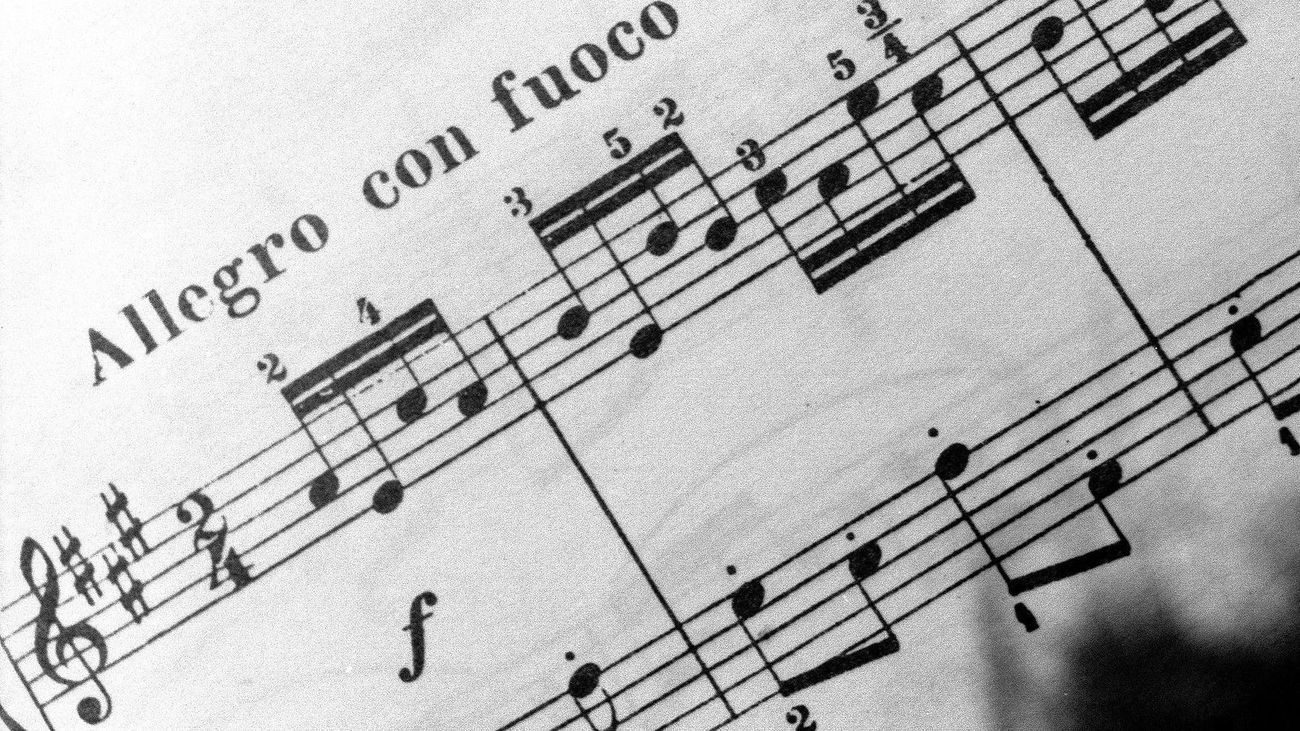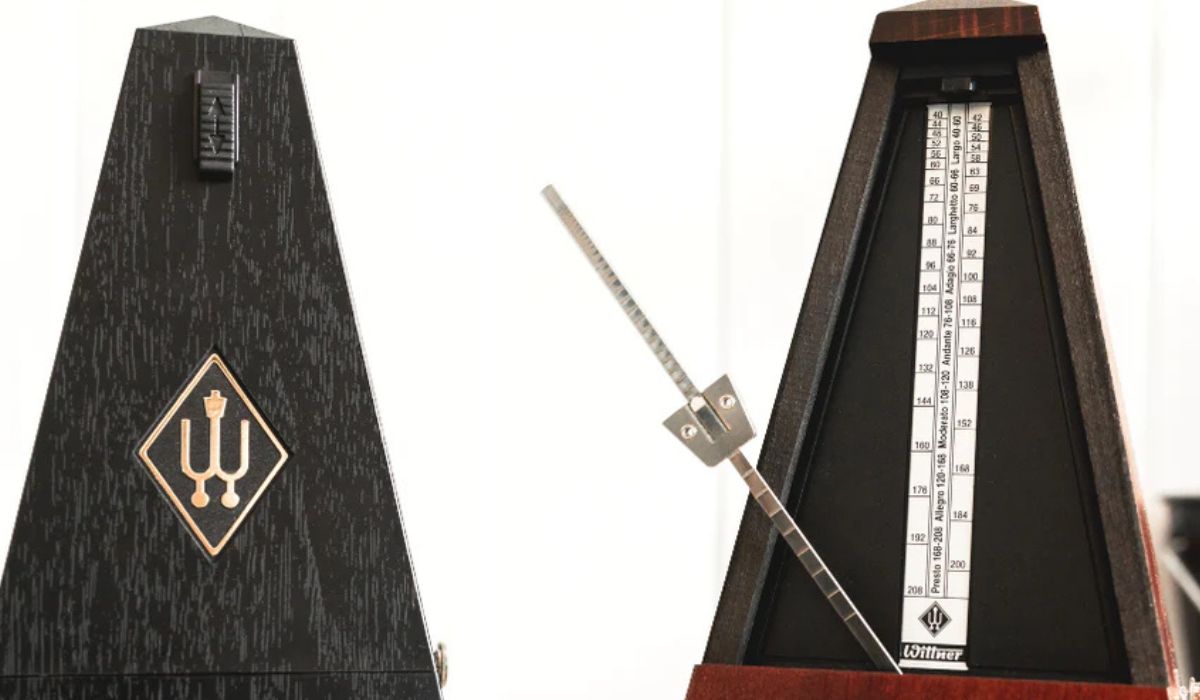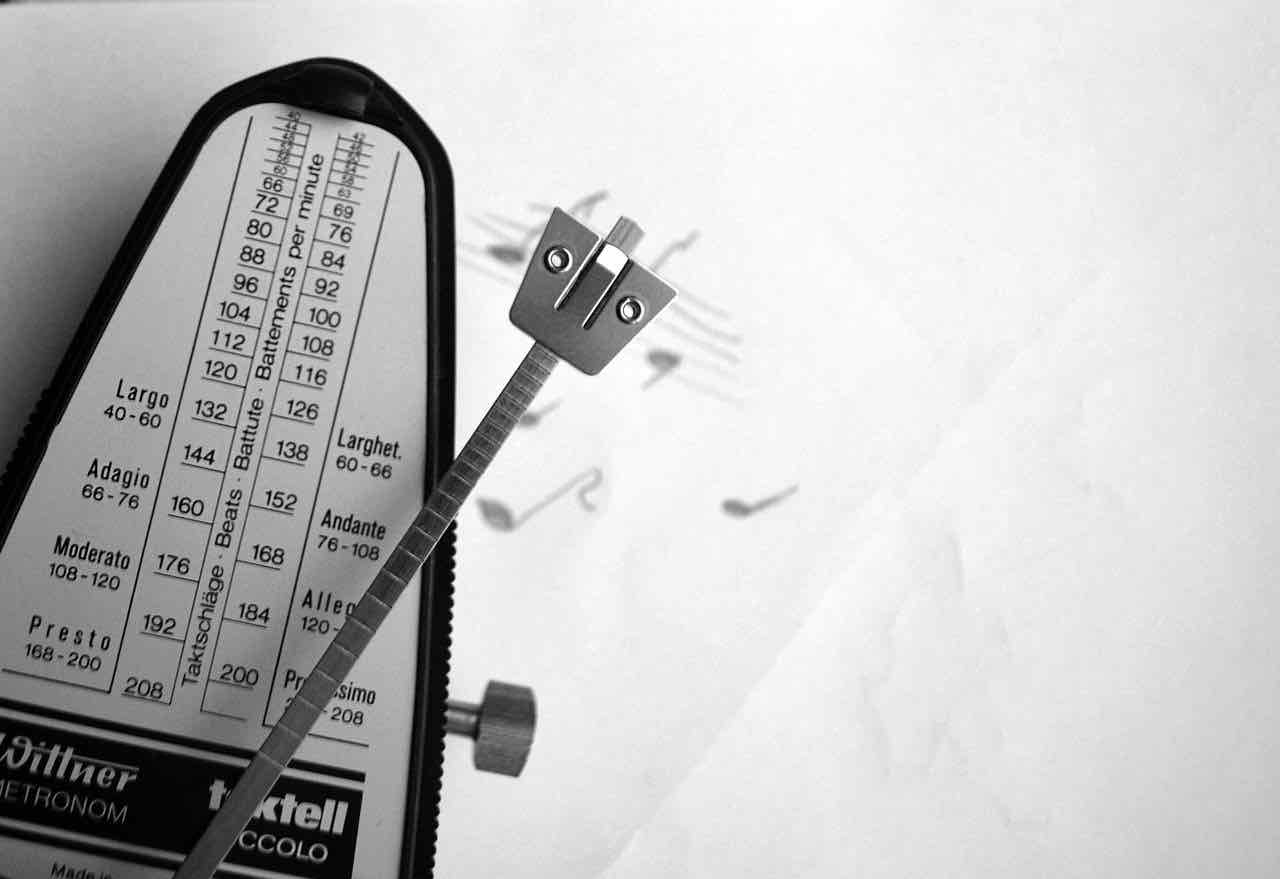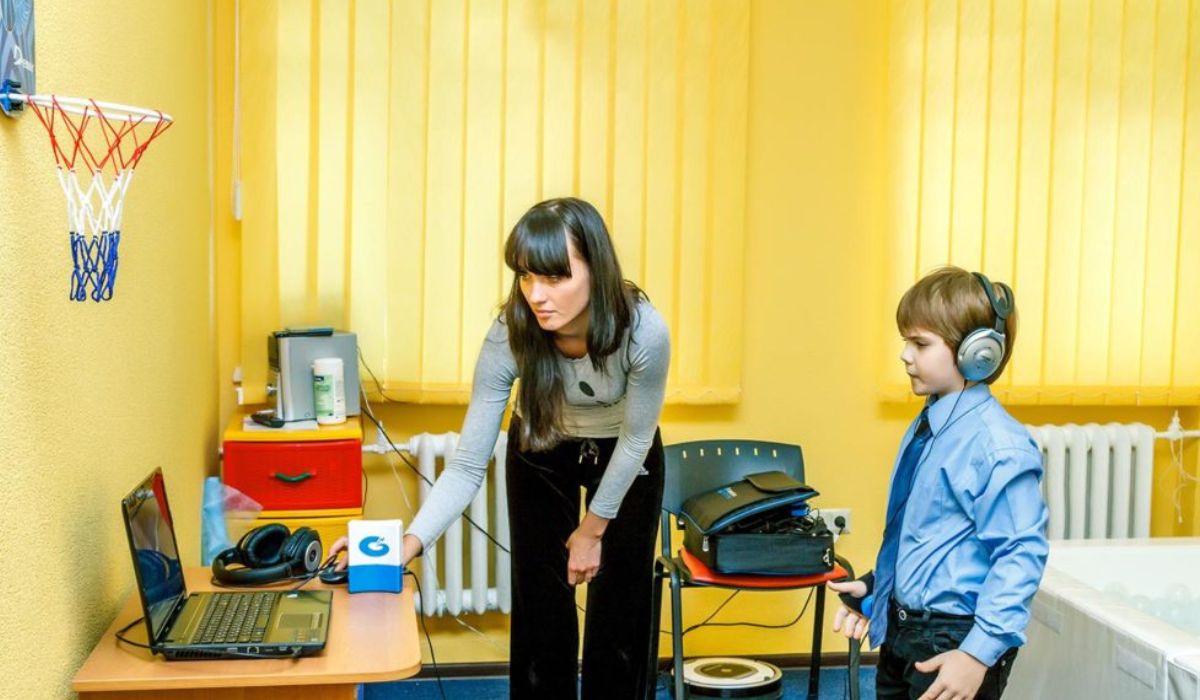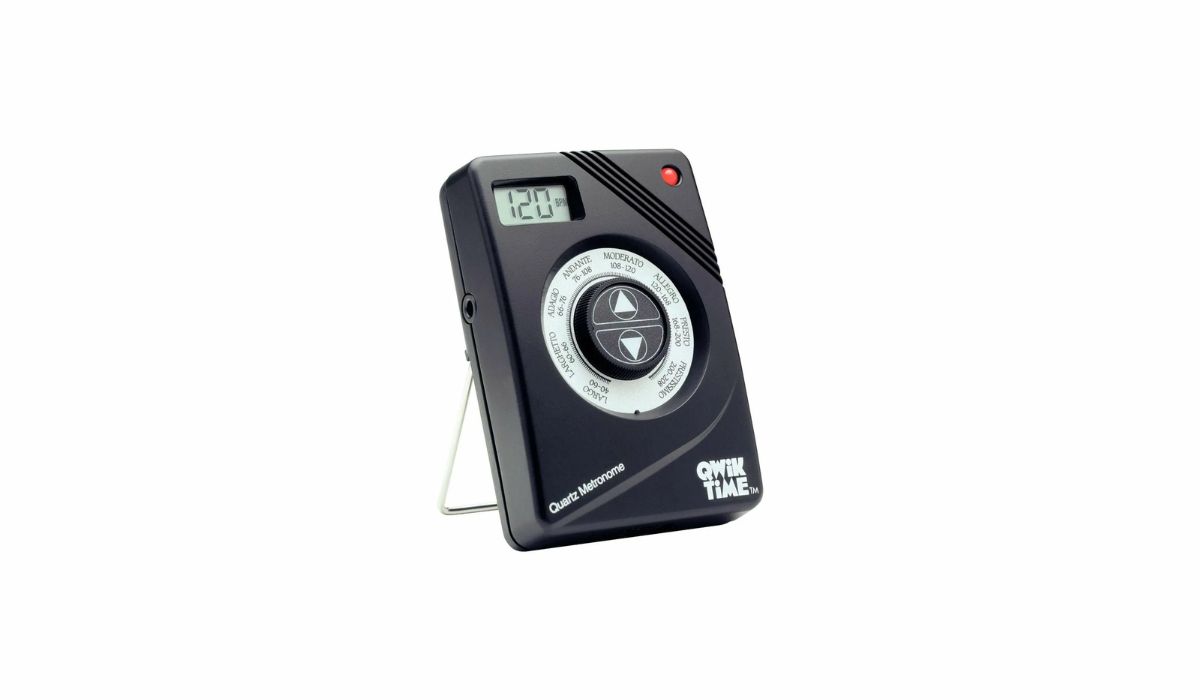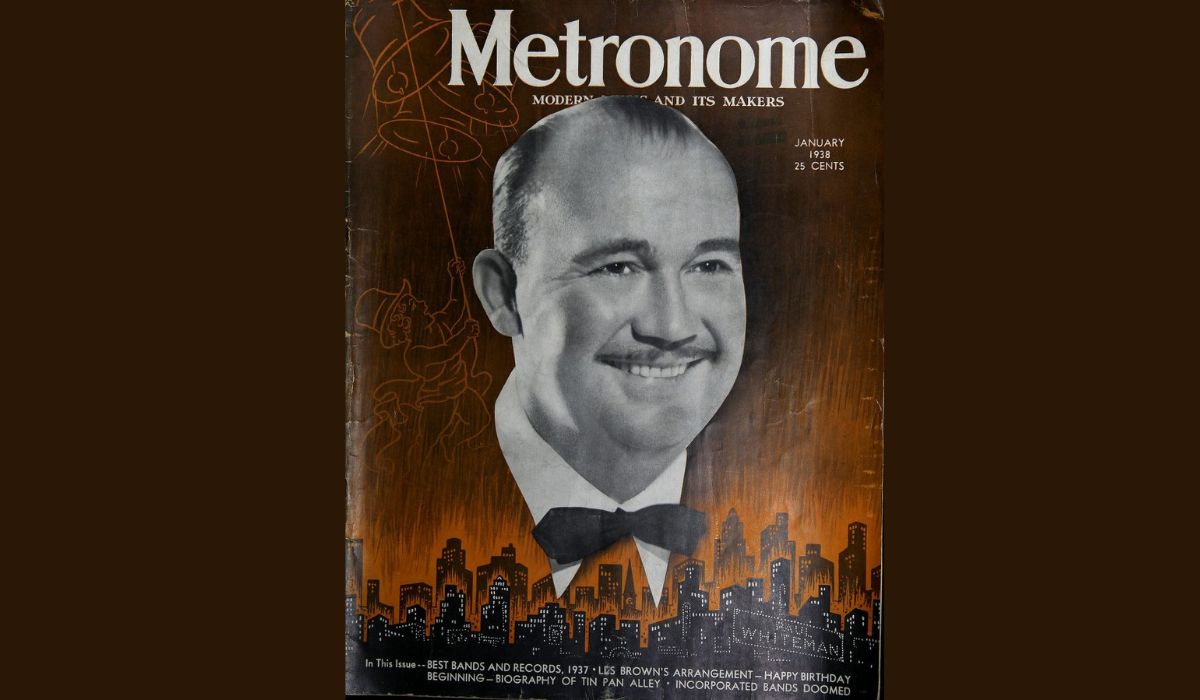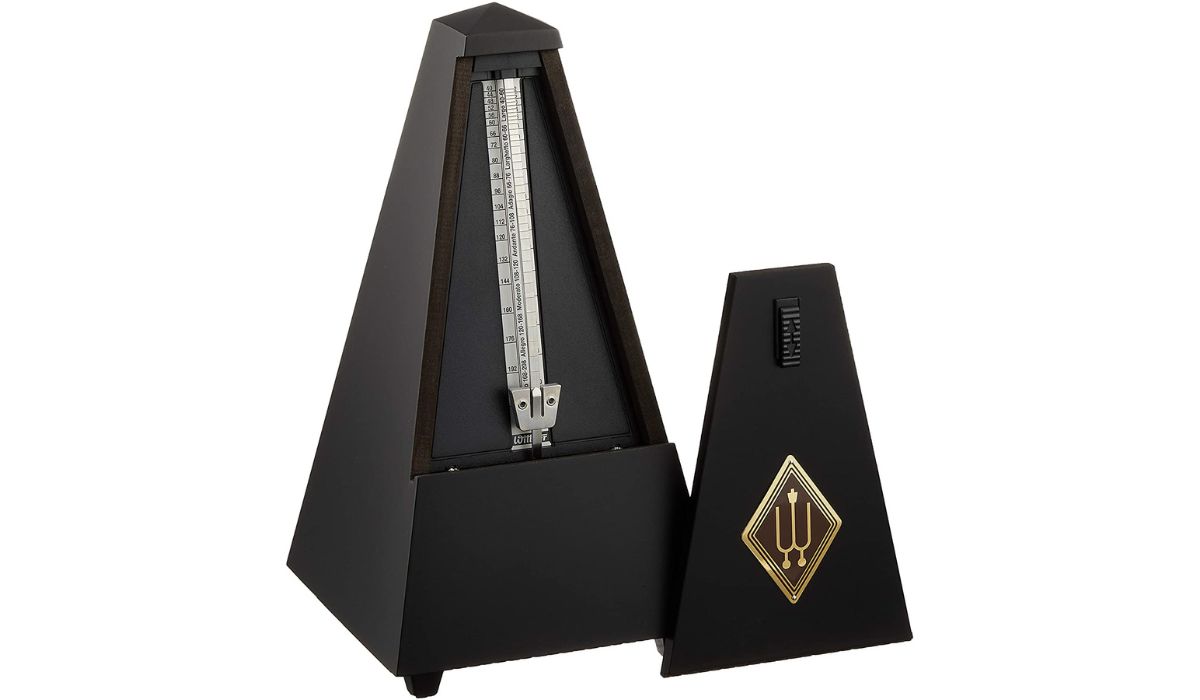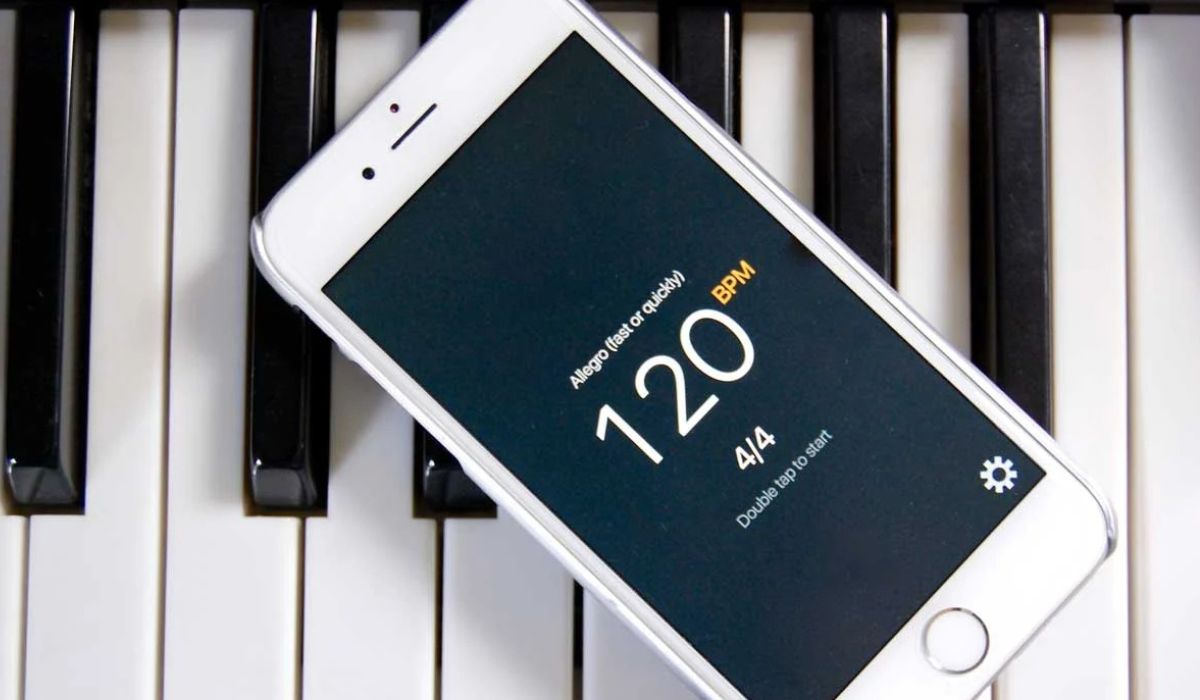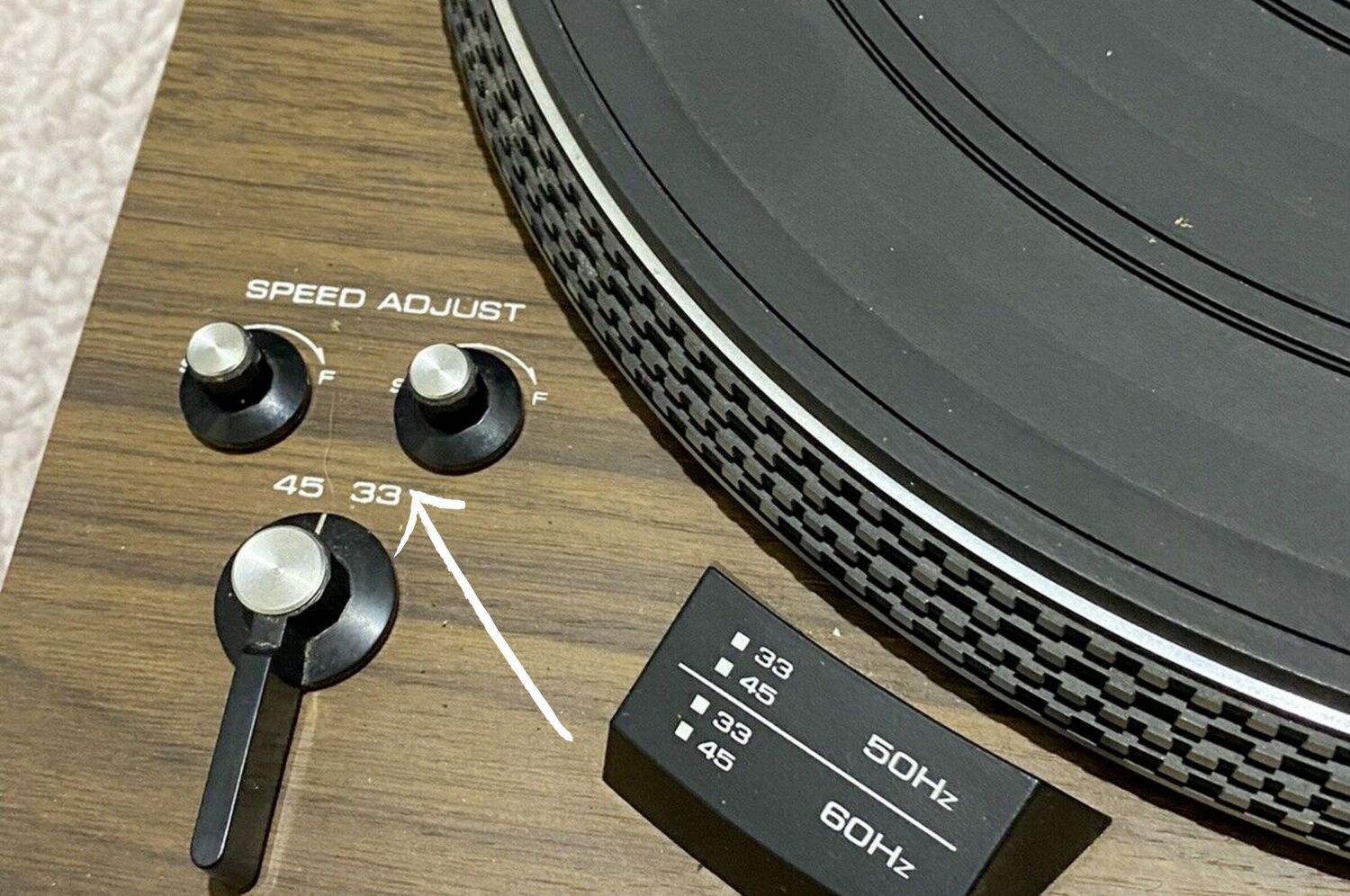Home>Production & Technology>Metronome>What Metronome Speed Is Allegro
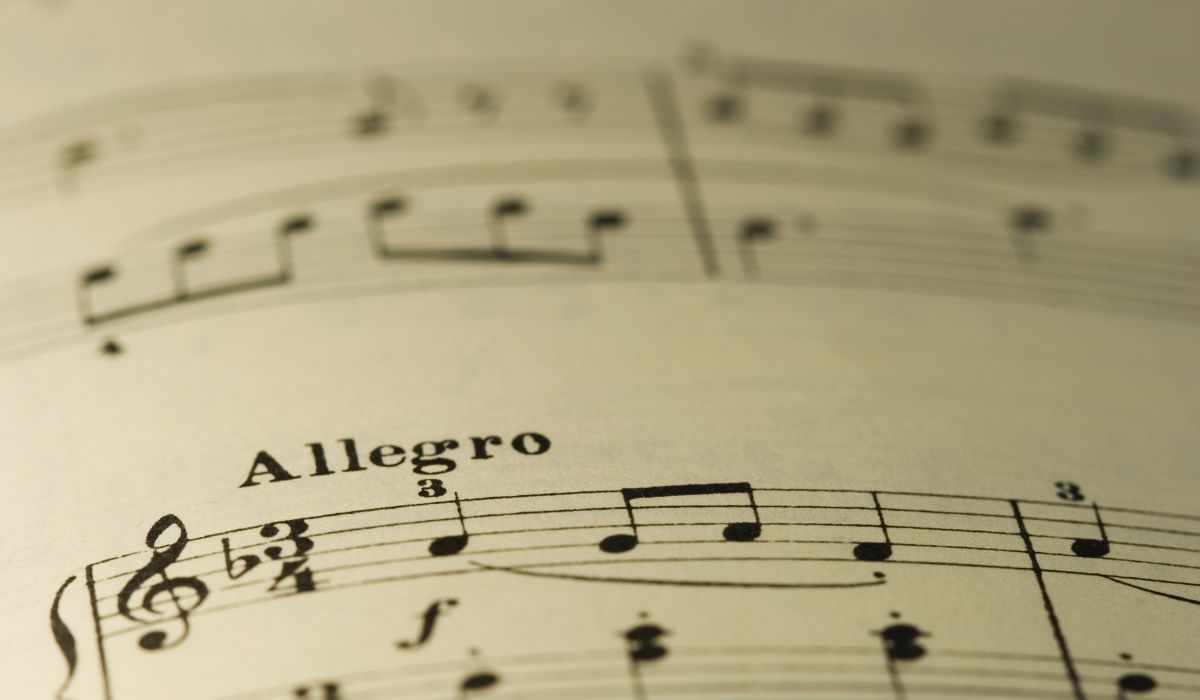

Metronome
What Metronome Speed Is Allegro
Published: January 14, 2024
Discover the ideal metronome speed for Allegro music tempo and improve your rhythm and precision. Find the perfect balance with the right metronome setting.
(Many of the links in this article redirect to a specific reviewed product. Your purchase of these products through affiliate links helps to generate commission for AudioLover.com, at no extra cost. Learn more)
Table of Contents
Introduction
When it comes to music, tempo is a crucial element that helps determine the mood and feel of a piece. Whether you’re a musician, a music student, or simply a music enthusiast, understanding and applying the appropriate metronome speed for a specific tempo is essential. In this article, we will explore the concept of metronome speed for allegro, a popular tempo marking in music.
Allegro, derived from the Italian word for “cheerful” or “lively,” is a tempo indication that suggests a fast, spirited, and energetic pace. It is a common marking found in various musical genres, including classical, jazz, and pop music. To accurately play a piece at an allegro tempo, musicians often rely on the help of a metronome.
A metronome is a device that produces a rhythmic sound or visual cue at a precise rate, measured in beats per minute (BPM). It serves as a valuable tool for musicians to maintain a consistent tempo and to synchronize with other performers when playing in an ensemble.
In the following sections, we will delve deeper into the relationship between metronome speed and allegro tempo. We will also explore various factors that influence the interpretation of allegro and provide guidance on how to set the metronome speed for this lively tempo marking.
Definition of Allegro
Allegro is a widely used Italian musical term that signifies a fast and lively tempo. The word translates to “cheerful” or “merry” in English, and it carries a sense of energy and excitement.
Allegro is a versatile tempo marking that can be found across different music genres and styles. It appears in classical compositions, such as symphonies and sonatas, as well as in contemporary music, including jazz and pop.
While the exact speed of allegro may vary depending on the context and the composer’s intent, it generally falls within a moderate to fast tempo range. It is faster than the preceding tempo marking of andante but not as brisk as presto. Allegro sets a lively pace for the music, creating a sense of forward momentum and urgency.
Interpreting the precise speed of allegro can be subjective, as it can be influenced by the musical style, the performer’s interpretation, and the overall character of the piece. However, a general guideline for allegro falls between 120 and 168 beats per minute (BPM).
It’s important to note that the tempo indication of allegro is not an exact measurement, but rather a guiding principle. The tempo can be adjusted and shaped to fit the particular musical piece and the intention of the performer. It allows for creativity and expression within the defined range of fast and lively.
Now that we understand the definition and general characteristics of allegro, let’s explore how metronome speed relates to this lively tempo marking and how it can help us maintain a consistent and energetic rhythm.
Understanding Metronome Speed
A metronome is a valuable tool for musicians to develop a strong sense of timing and rhythm. It provides a steady and consistent beat, helping musicians stay in sync with the tempo of a piece. Understanding metronome speed is crucial in accurately practicing and performing music.
Metronome speed is measured in beats per minute (BPM), indicating the number of beats or pulses in one minute. It represents the tempo of the music and determines the pace at which the piece should be played. A higher BPM indicates a faster tempo, while a lower BPM suggests a slower tempo.
When using a metronome, musicians set the desired BPM depending on the tempo marking of the piece. It helps them establish a clear and steady pulse, enforcing precision and consistency in their playing.
Metronome speed can be adjusted manually to match the specific tempo marking of a piece. It allows musicians to practice at a comfortable speed and gradually increase the tempo as they become more proficient. This gradual increase in speed helps with learning and mastering challenging passages.
It’s worth noting that metronome speed is not a rigid requirement. Musicians can choose to slightly deviate from the indicated BPM to add musical expression and dynamics. However, it is essential to maintain a balanced and consistent tempo throughout the entirety of the piece, ensuring coherence and musicality.
Additionally, metronomes offer various settings to customize the sound and visual cues according to personal preference and the specific needs of the music. Some metronomes provide different sounds, such as woodblock, click, or beep, allowing musicians to select the one that best suits the style and genre of the piece.
Overall, understanding metronome speed is crucial for musicians to stay in rhythm and accurately adhere to the intended tempo of a piece. It provides a foundation for practice and performance, helping musicians maintain consistency and precision in their playing.
The Relationship Between Tempo and Beats Per Minute (BPM)
Tempo and beats per minute (BPM) are closely interconnected in music. Tempo refers to the speed or pace of a musical piece, while BPM measures the number of beats that occur within a minute. Understanding the relationship between tempo and BPM is key to accurately setting metronome speed and maintaining a consistent rhythm.
The tempo of a piece is generally indicated by descriptive Italian terms such as allegro, adagio, or presto. These terms provide a general guideline for the speed and character of the music, but the specific BPM can vary depending on the interpretation of the performer and the musical style.
For instance, a tempo marking of allegro suggests a fast and lively pace. In terms of BPM, allegro typically ranges between 120 and 168 BPM. This range provides flexibility for different musical genres and allows performers to adjust the tempo accordingly.
Slower tempos such as adagio, which signifies a slow and leisurely pace, usually fall between 66 and 76 BPM. On the other hand, presto, which indicates a very fast and lively tempo, can range from 168 to 208 BPM.
It is important to note that tempo markings and their corresponding BPM values can vary slightly among different composers and musical styles. Additionally, personal interpretation and artistic expression also come into play when determining the exact BPM for a specific tempo marking.
When setting the metronome speed, the goal is to find a BPM that accurately represents the intended tempo of the piece. This requires careful listening and experimentation, taking into consideration the style, mood, and overall character of the music.
Furthermore, understanding the relationship between tempo and BPM allows musicians to adapt and adjust the metronome speed to suit their playing abilities and the specific requirements of the piece. It provides a foundation for practice, ensuring that the music is performed with the appropriate speed and rhythmic accuracy.
By grasping the relationship between tempo and BPM, musicians can effectively use the metronome as a tool for maintaining a consistent rhythm and enhancing their musical performance.
How to Determine the Metronome Speed for Allegro
Setting the correct metronome speed for allegro is crucial for maintaining the energetic and lively pace of the music. Here are some steps to help you determine the appropriate metronome speed for allegro:
- Consult the tempo marking: Check the sheet music or the composer’s indication for the tempo marking. Look for the term “allegro” and any accompanying indications that may specify the desired speed or provide a BPM range.
- Consider the musical style: Different musical styles may have nuances in interpreting allegro. For example, an allegro tempo in classical music might be slightly different from an allegro tempo in jazz or pop music. Familiarize yourself with the specific style and listen to recordings to get a sense of the appropriate speed.
- Listen to recordings: Explore different recordings of pieces marked as allegro. Pay attention to the rhythm and overall energy of the performance. This will help you develop a sense of the ideal metronome speed for allegro in the context of the specific piece you are playing.
- Experiment with BPM ranges: Start by setting the metronome at the lower end of the suggested BPM range for allegro and play the piece along with it. Assess whether the tempo feels too slow or too fast and adjust accordingly. Gradually increase or decrease the metronome speed until you find the tempo that captures the essence of allegro for your performance.
- Consider the complexity of the music: More complex pieces may require a slightly slower metronome speed to maintain accuracy and precision. Take into account any technical challenges or intricate passages and adjust the metronome speed accordingly.
- Trust your musical instincts: As a musician, you have the ability to interpret and express the music. Use your musical instincts to determine the metronome speed that feels right for the piece. Remember, while it is important to stay within the suggested BPM range for allegro, there is room for personal interpretation and artistic expression.
By following these steps and carefully considering the tempo marking, musical style, and your own musical instincts, you can determine the appropriate metronome speed for allegro for a captivating and lively performance.
Factors That Influence the Interpretation of Allegro Tempo
Interpreting the allegro tempo is not just about setting a specific metronome speed; it also involves considering various factors that affect the overall musical interpretation. Here are some key factors that influence the interpretation of allegro tempo:
- Musical Style: Different musical styles may approach allegro tempo differently. For example, in classical music, allegro might be played with a crisp and precise articulation, while in jazz or pop music, it might be interpreted with a looser and groovier feel.
- Mood and Character: Allegro can evoke different moods and characters depending on the specific piece. It can range from joyful and celebratory to energetic and frenetic. Consider the emotions and atmosphere that the composition strives to convey, and adapt the metronome speed and playing style accordingly.
- Instrumentation: The choice of instruments in a musical piece can influence the interpretation of allegro. Some instruments may have technical limitations that require adjustments to the metronome speed for optimal performance. Consider the capabilities and tonal characteristics of the instruments involved.
- Phrasing and Articulation: Allegro tempo does not mean playing all the notes at the same speed. Musical phrasing and articulation play an important role in shaping the interpretation. Pay attention to dynamics, accents, legato, staccato, and other nuances that help bring out the musicality of the piece.
- Composer’s Intent: Understanding the composer’s intent is crucial for a faithful interpretation of allegro. Study the composer’s musical style, historical context, and any specific indications or markings in the score. This will provide insights into the desired tempo and artistic vision.
- Context within the Composition: The placement of the allegro section within the overall composition can influence its interpretation. Consider the preceding and following sections, and the musical journey the piece takes. Adjust the metronome speed and playing style to ensure cohesiveness and musical flow.
- Collaborative Considerations: If performing with other musicians, ensure that the metronome speed is agreed upon collectively. Collaboration is essential to maintain synchronicity and achieve a cohesive ensemble performance.
By taking these factors into account, musicians can shape their interpretation of allegro tempo, going beyond the mere metronome speed. It allows for a more nuanced and expressive performance, capturing the essence of the music and engaging the listeners.
Common Mistakes When Setting a Metronome for Allegro
While metronomes are valuable tools for maintaining a steady tempo, there are some common mistakes that musicians make when setting a metronome for allegro. By being aware of these pitfalls, you can avoid them and ensure a more accurate and effective use of the metronome. Here are some common mistakes to watch out for:
- Setting the metronome too fast or too slow: One of the most common mistakes is misjudging the appropriate BPM range for allegro. Setting the metronome too fast can lead to rushed playing, while setting it too slow can result in a lack of energy. Take the time to listen to recordings and find the sweet spot that captures the intended lively tempo.
- Ignoring the musical context: Allegro tempo can vary depending on the musical style, genre, and specific piece. Failing to consider the musical context can lead to inconsistencies in interpretation. Take into account the mood, character, and style of the music when choosing the metronome speed.
- Not adjusting for technical challenges: Allegro passages often come with technical demands, such as rapid scale runs, complex rhythms, or intricate fingerings. Failing to adjust the metronome speed to accommodate these challenges can lead to sloppy and imprecise playing. Slow down the metronome speed during practice to ensure technical mastery.
- Relying solely on the metronome: While the metronome provides a valuable reference, it should not be the sole guide for tempo and expression. Musical interpretation requires flexibility and a human touch. Use the metronome as a tool, but also rely on your musical instincts and artistic expression to shape the dynamics and phrasing.
- Not practicing with different metronome subdivisions: Allegro tempo often involves quick note subdivisions, such as eighth notes or sixteenth notes. Neglecting to practice with different metronome subdivisions can lead to uneven playing and rhythmic inaccuracies. Adjust the metronome setting to focus on these subdivisions and develop rhythmic precision.
- Being rigid with tempo: Allegro tempo allows for some flexibility and musical expression. Strictly adhering to the metronome speed without room for slight variations can result in a mechanical and robotic performance. Experiment with subtle tempo fluctuations to add phrasing and musicality while maintaining the overall sense of lively tempo.
- Over-reliance on the metronome: While the metronome is a valuable practice tool, it should not be relied upon exclusively. Use it to develop a strong sense of timing and rhythm, but also practice without the metronome to cultivate internal pulse and independence. This will help you become a more versatile and expressive musician.
Avoiding these common mistakes when setting a metronome for allegro will help you develop a more accurate and musical interpretation. Strive for consistency, precision, and artistic expression in your performance, using the metronome as a supportive tool rather than a rigid constraint.
Conclusion
Setting the correct metronome speed for allegro is essential for musicians to capture the lively and energetic tempo of a piece. Metronomes serve as invaluable tools to maintain a steady rhythm, improve timing, and synchronize with fellow musicians. However, it’s important to consider various factors that influence the interpretation of allegro tempo, such as musical style, mood, phrasing, and the composer’s intent.
Understanding the relationship between tempo and beats per minute (BPM) helps musicians determine the appropriate metronome speed for allegro. It provides a starting point for practice and performance, allowing for consistent and precise playing.
However, it’s crucial to avoid common mistakes when setting the metronome for allegro. These mistakes include misjudging the BPM range, disregarding musical context, neglecting technical challenges, and relying too heavily on the metronome at the expense of musical expression.
In conclusion, setting the metronome speed for allegro requires a balance of technical accuracy and artistic interpretation. By considering the specific musical elements, experimenting with tempos, and relying on personal musical instincts, musicians can bring life and energy to their performances, capturing the essence of allegro tempo.
So, let the metronome be your guide as you embark on the musical journey of playing allegro. Strive for precision, expressiveness, and a deep understanding of the music, allowing the lively tempo to ignite your passion and captivate your audience.


